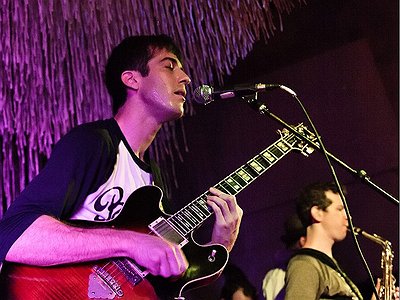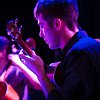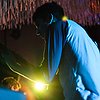Part 2
Could you take me through the process of composing on the basis of one of your pieces that's particularly dear to you, please? What do you start with when working on a new piece, for example, how do you form your creative decisions and how do you refine them?
For my last few compositions, I’ve been taking a new, somewhat convoluted approach. I used it to write Exercises in Breathing – my latest piece for the ETHEL string quartet and have subsequently used it for pieces for my new-music ensemble Hotel Elefant.
Generally, during a walk or a run, I get some rhythm or melodic fragment stuck in my head, repeating over and over. If I think it’s intriguing, I’ll allow myself to obsess over the figure and use it for the basis for some sort of structure, either for a small section of a piece or for the full piece.
Either keeping that in my head or using it a simple launching point, I create a full graphic score for the piece: that is, use lines and shapes to indicate contours, texture changes and narrative arc (if there is one). I generally end up with a 3 to six foot scroll of paper that is superficially closer to visual art than standard music notation.
I then record myself – mainly with my voice – interpreting the score, perhaps with some electronic elements or guitar.
Finally, I transcribe my interpretation into more or less “standard” notation, changing it (often drastically) to fit the idiosyncrasies of the chosen instruments.
It’s a very round-about approach that takes quite a bit longer than creating and refining a musical sketch., but the results have been very personal and interesting.
What, if anything, do you personally draw from the cosmos of electronic music and digital production tools that is inspiring for your daily practise? In how far do you see the potential for a mutual creative pollination between the two?
At this point, I think that electronic music is so prevalent that it’s difficult to think of writing music without that influence. Electronic sounds are really the sounds of our reality, whether in the sound-design of podcasts, in the music we hear in every grocery store or parking lot, or the alerts on our iPhones and iPads. Paradoxically, electronic music also has the ability to construct an “unreal” or alienating environment – something that I really try to do with my own music.
In terms of production tools, as a working composer, the ability to write and produce high-quality music quickly is essential, and it’s hard to imagine doing that before the days of digital/audio workstations.
How do you see the relationship between timbre and composition?
At least in my own music, they are inseparable. Sometimes I wonder if that’s a crutch – if I’m unable to write material that can stand on it’s own naked. But the truth is that all of my favourite music, from Mingus to Cage to Pavement to Flying Lotus is as much about sounds and blending as it is about traditional ideas of melody and harmony.
Time is a variable only seldomly discussed within the context of contemporary composition. Can you tell me a bit about your perspective on time in relation to a composition and what role it plays in your work?
I think about space more than time, though they are obviously intrinsically intertwined. By that, I mean creating an immersive soundscape that sounds very tactile and three dimensional. I mean, doing that does indicate making events that happen in time (and pacing is very much something that I’m constantly working on), but it’s not something I’m actively considering while writing music.
What do improvisation and composition mean to you and what, to you, are their respective merits?
To me – as someone who comes from a strong jazz background – they really are almost the same thing. Improvisation is like unedited composition and I can’t really think of any composer who isn’t also an improviser in his/her own way.
I like writing things out, because it gives me the ability to really follow through on a concept or narrative, but I always want my own music to be charged with the instability and uncertainty of improvisation. For that reason, there’s always at least one parameter left open, whether it’s the speed of vibrato, timbre, or interpreting a bit of graphic notation that connects moments of through-composed music.
Do you feel it important that an audience is able to deduct the processes and ideas behind a work purely on the basis of the music? If so, how do you make them transparent?
I don’t think that it’s always important or even relevant, but I do think that transparency can be very interesting. I played a Pauline Oliveros piece at Carnegie Hall two years ago and the score – a set of “poems” that we interpreted musically on the fly – was projected on a screen for the audience to see. I think that was a great idea, one that allowed the listeners to really engage with and understand the process. Sometimes I think that can be done with a title, as well. I’ve mentioned my Exercises in Breathing – and that seems pretty self-explanatory to me.
That said, as a listener, I’ve always liked coming to my own conclusions. I hate it when a Hollywood film company makes a movie about one of my favourite books and there’s an illustrated character on the cover that looks nothing like the intangible being that I imagined and that took me out of my reality.








